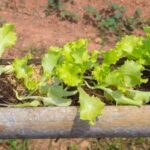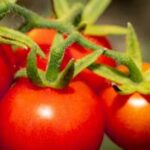Vegetable container gardens have been gaining significant popularity in recent years, and for good reason. Not only do they offer a practical solution for urban dwellers with limited space, but they also come with numerous benefits that traditional gardening methods may not provide. In this article, we will explore the rising trend of vegetable container gardens, the advantages of growing vegetables in containers, and the importance of aesthetics and visual appeal in gardening.
One of the main reasons behind the surge in popularity of vegetable container gardening is its versatility and ability to adapt to various living environments. Whether you have a small balcony, a rooftop terrace, or even just a sunny window sill, you can create your own little edible oasis with containers. This accessible form of gardening allows individuals without expansive yards to still enjoy the satisfaction of growing their own food.
In addition to accessibility, there are several other advantages to growing vegetables in containers. Container gardens require less maintenance compared to traditional gardens as they eliminate the need for extensive weeding and soil preparation. Containers also provide better control over soil quality and moisture levels, resulting in healthier plants. Furthermore, container gardens can be easily moved around to optimize sunlight exposure or protect delicate plants during extreme weather conditions.
While functionality and productivity are important aspects of vegetable container gardening, aesthetics should not be overlooked. The visual appeal of a garden enhances the overall experience and encourages us to spend more time outdoors enjoying nature’s beauty.
The vibrant colors and lush foliage of flourishing vegetable plants can transform any small space into a picturesque haven. By combining practicality with artistic design principles, vegetable container gardens have become an exciting trend that appeals to both seasoned garden enthusiasts and beginners alike.
In the following sections, we will dive deeper into planning your own vegetable container garden. We will discuss everything from selecting suitable containers and soil mixes to choosing the perfect vegetables for your space. We will also explore design techniques for creating visually stunning arrangements and provide tips on planting, maintenance, and harvesting.
Additionally, we will showcase a gallery of stunning photos featuring thriving vegetable container gardens that will surely inspire you to embark on your own gardening journey. So let’s dig in and discover the joys of vegetable container gardening.
Planning Your Vegetable Container Garden
When it comes to planning your vegetable container garden, there are a few key factors to consider to ensure successful growth and bountiful harvests. First and foremost, determining the right location for your containers is crucial. Vegetables need a minimum of six hours of direct sunlight per day, so choose a spot that receives adequate sunlight throughout the day.
Next, it’s important to select the appropriate containers for different vegetables. Consider the size and root depth of each plant when choosing containers. Some vegetables, like tomatoes and peppers, require larger pots to accommodate their extensive root systems. On the other hand, leafy greens and herbs can thrive in smaller pots or even hanging baskets.
Once you’ve chosen your containers, selecting the right soil mix and ensuring proper drainage is essential for successful growth. Use a high-quality potting mix that is well-draining but also retains enough moisture for plants to thrive. Adding compost or organic matter can further enrich the soil and promote healthy growth.
To summarize:
- Determine the right location for your containers based on sunlight requirements.
- Choose appropriate containers based on plant size and root depth.
- Select a high-quality potting mix with good drainage properties.
- Consider adding compost or organic matter to enrich the soil.
By carefully planning these aspects of your vegetable container garden, you’ll set yourself up for success and create an environment where your plants can flourish.
Essential Tools and Supplies
When starting a vegetable container garden, it is important to gather the necessary tools and supplies to ensure success with your plants. Here are some essential items you will need:
- Containers: Choose containers that are appropriate for the vegetables you intend to grow. Some popular options include ceramic pots, plastic containers, wooden boxes, and hanging baskets. Make sure they have proper drainage holes at the bottom to prevent waterlogging.
- Soil Mix: Selecting the right soil mix is crucial for optimal growth of your vegetables. Look for potting mixes specifically formulated for container gardening, as they provide good drainage while retaining moisture and nutrients. Avoid using garden soil alone, as it can become compacted in containers.
- Gardening Tools: Basic gardening tools such as a trowel, hand rake, pruners, and a watering can or hose with a spray nozzle are essential for planting and maintaining your vegetable container garden. These tools will help you loosen soil, remove weeds, trim plants as needed, and water efficiently.
- Fertilizer: Since container gardens can deplete nutrients more quickly than traditional gardens, it is important to regularly fertilize your vegetables with a balanced organic fertilizer or slow-release granules specifically designed for potted plants. This will ensure healthy growth and robust harvests.
- Pest Control: One challenge of container gardening is managing pest control effectively. Have some organic pest control options on hand such as neem oil or insecticidal soap to treat common pests like aphids or mites if they appear in your garden.
While there may be specific brands or products recommended by experienced gardeners, it’s worth noting that cost-effective alternatives and DIY options can also be viable choices when starting a vegetable container garden. For example, repurposing old buckets or using DIY self-watering systems can save money without compromising the health of your plants.
By gathering these essential tools and supplies, you will be well-prepared to begin your vegetable container garden and set yourself up for success in growing your own fresh and nutritious vegetables.
Selecting the Perfect Vegetables for Container Gardening
A Comprehensive List of Vegetables
When it comes to selecting vegetables for your container garden, the options are truly endless. There is a wide range of vegetables that thrive in containers, allowing you to grow an abundant and diverse harvest right on your porch or balcony.
Some popular choices for container gardening include tomatoes, peppers, lettuce, spinach, carrots, radishes, herbs like basil and parsley, and even smaller varieties of fruits like strawberries. These vegetables are well-suited to the conditions provided by containers such as proper drainage and sufficient space for root development.
Factors to Consider
When choosing specific vegetables for your container garden, there are several important factors to consider. One key factor is the size of the mature plant. It’s essential to select vegetable varieties that do not require excessive space for their roots or foliage. Compact or dwarf varieties are ideal choices for container gardening as they can be grown successfully in smaller spaces.
Another factor to consider is the amount of sunlight your chosen location receives. Different vegetables have varying sunlight requirements, with some needing full sun exposure while others prefer partial shade. Be sure to check the sunlight requirements of each vegetable you want to grow and ensure that your chosen location meets those needs.
Lastly, consider the climate in which you live. Certain vegetables thrive in cooler temperatures while others prefer warmer climates. Make sure to select vegetables that are suitable for your climate zone and growing season duration.
Maximizing Variety in Your Container Garden
One of the joys of vegetable container gardening is the ability to grow a variety of different plants within a limited space. By carefully selecting plants that complement each other in terms of growth habit and nutrient needs, you can create a thriving mini-ecosystem within your containers.
Consider incorporating companion planting techniques where certain plants benefit from being planted together due to pest control or nutrient enhancement properties. For example, planting marigolds next to tomatoes can help deter harmful insects. Additionally, combining plants with varying heights and textures adds visual interest to your container garden.
By selecting a colorful mix of vegetables, you can create an eye-catching and visually appealing container garden. Mix up different varieties of lettuce for a variety of leaf colors and shapes, or grow several types of cherry tomatoes in different hues for a stunning display.
Remember that experimentation is key when it comes to vegetable container gardening. Don’t be afraid to try out new and unusual varieties or mix and match different plants to discover unique combinations that work well together.
Designing Your Vegetable Container Garden
When creating a vegetable container garden, it’s important to consider the design and aesthetics of your space. The visual appeal of your garden can enhance your overall gardening experience and make it even more enjoyable. Here are some tips for designing an aesthetically pleasing vegetable container garden:
- Utilize different container sizes and heights: Incorporating containers of various sizes and heights can add depth and dimension to your garden. Taller containers like planters or raised beds can act as focal points, while smaller pots can be used for herbs or smaller vegetables. Experiment with arranging your containers in different ways to find what looks best in your space.
- Consider color and texture: Adding variety in colors and textures can make your vegetable container garden visually interesting. Mix different plants with contrasting foliage, such as deep green lettuce leaves next to purple basil or orange marigolds as companion plants. You can also choose containers in vibrant colors or unique textures to create a focal point within your garden.
- Incorporate vertical gardening techniques: Utilizing trellises, stakes, or other vertical gardening techniques can maximize the use of limited space and add vertical interest to your vegetable container garden. Growing vining plants like tomatoes or cucumbers on trellises not only saves space but also creates a visually stunning display.
In summary, designing your vegetable container garden is about finding a balance between functionality and aesthetics. By considering factors such as container sizes, colors, textures, and incorporating vertical gardening techniques, you can create a visually appealing garden that enhances the overall experience of growing your own vegetables.
| Tips for Designing Your Vegetable Container Garden |
|---|
| Utilize different container sizes and heights |
| Consider color and texture |
| Incorporate vertical gardening techniques |
Planting and Maintenance
Once you have planned and designed your vegetable container garden, the next step is to properly plant and maintain it. Follow these steps for successful growth and bountiful harvests.
1. Step-by-step guide on planting vegetable seeds or seedlings in containers:
To start, prepare your containers by filling them with a suitable soil mix. Moisten the soil before planting to ensure proper hydration. If using seeds, follow the instructions on the seed packet for optimal depth and spacing. If using seedlings, gently remove them from their nursery pots and loosen any tangled roots before placing them in the container. After planting, water thoroughly to settle the soil.
2. Providing proper care and maintenance tips for healthy growth:
Container gardens require regular attention to thrive. Water your vegetables regularly, as containers tend to dry out more quickly than traditional gardens. Check the moisture level by sticking your finger about an inch into the soil – if it feels dry, it’s time to water. Fertilize your plants as needed with a balanced fertilizer specifically formulated for vegetables in containers.
3. Watering, fertilizing, and pest control techniques specific to container gardening:
When watering your vegetable container garden, aim for consistent moisture without overwatering or causing waterlogged roots. Consider using self-watering containers or drip irrigation systems that provide a controlled amount of water directly at the roots. To avoid nutrient deficiencies, feed your plants with organic compost or a slow-release fertilizer every few weeks.
Monitor your plants regularly for common pests such as aphids, snails, or caterpillars. Use organic pest control methods like handpicking or insecticidal soap to keep populations under control without harming beneficial insects.
By following these planting and maintenance tips specific to container gardening, you can enjoy healthy plants that produce abundant vegetables throughout the growing season. Stay vigilant in providing proper care and address any issues promptly to ensure a successful harvest.
Harvesting and Enjoying Your Homegrown Vegetables
Harvesting your homegrown vegetables is a rewarding experience that allows you to fully enjoy the benefits of your hard work. However, knowing when to harvest each vegetable at its peak can be a bit challenging. Here are some signs to look for when determining if your vegetables are ready to be harvested:
- Mature size: Most vegetables have a specific size at which they are ready to be harvested. For example, tomatoes should be firm and fully colored, while carrots should reach their expected length and thickness.
- Color and texture: Pay attention to the color and texture of your vegetables as they mature. Vegetables like peppers should have vibrant colors and a shiny appearance, indicating ripeness.
- Scent: Some vegetables emit an enticing aroma when they are ready for harvest. For instance, basil leaves become fragrant and flavorful, making it the perfect time to pick them.
Proper harvesting techniques are essential not only for obtaining the best quality produce but also for ensuring continuous growth throughout the season. Follow these tips for successful harvesting:
- Use clean tools: It is important to use clean garden shears or scissors when harvesting so as not to introduce any pathogens into the plants.
- Harvest in the morning: Early morning is the best time to harvest as temperatures tend to be cooler, preventing wilting of delicate leaves.
- Cut above a leaf node: To encourage new growth, make clean cuts just above a leaf node or lateral bud when harvesting herbs or leafy greens.
Now that you have harvested your bountiful crop of fresh vegetables, it’s time to savor their flavors in delicious recipes. Here are some ideas and inspiration on how you can enjoy the fruits of your labor:
- Summer salads: Create vibrant salads bursting with flavor by combining freshly harvested tomatoes, cucumbers, bell peppers, lettuce, and herbs. Add a homemade dressing for an extra touch of deliciousness.
- Sautéed vegetables: Lightly sauté zucchini, eggplant, and bell peppers in olive oil with garlic and herbs for a quick and nutritious side dish.
- Roasted vegetables: Toss harvested root vegetables like carrots, beets, and sweet potatoes in olive oil, sprinkle them with your favorite seasonings and roast until tender.
By following these tips for harvesting your homegrown vegetables and exploring exciting recipes, you can fully enjoy the fruits of your labor while reaping the numerous health benefits from consuming fresh produce. So go ahead and indulge in the satisfaction of growing your own food.
Showcasing Stunning Photos of Vegetable Container Gardens
One of the most captivating aspects of vegetable container gardening is the stunning visual appeal that it can bring to any space. The combination of vibrant colors, lush greenery, and the unique shapes and sizes of different vegetables can create a visually stunning garden that not only adds beauty to your surroundings but also provides you with fresh produce. In this section, we will showcase some mesmerizing photos of vegetable container gardens to inspire and ignite your creativity.
A Photo Gallery of Thriving Vegetable Container Gardens
In this photo gallery, you will find a collection of captivating images that demonstrate the incredible potential of vegetable container gardens. From small balcony spaces to spacious backyard areas, these photos showcase how vegetable containers can transform any setting into a picturesque oasis. Each image displays a unique arrangement of vegetables, herbs, and even fruits, exhibiting the variety and abundance that can be achieved in a container garden.
Inspiring Designs and Plant Arrangements
The showcased designs and plant arrangements in these photos illustrate how creativity knows no bounds in the world of container gardening. You will witness beautiful combinations of different colors and textures as well as expertly designed layouts that maximize space utilization. These designs demonstrate how even small-scale gardens can yield impressive results when carefully planned and executed.
Success Stories from Gardeners
Lastly, we want to share success stories from experienced gardeners who have achieved stunning results with their vegetable container gardens. These individuals have overcome challenges, honed their skills, and experimented with various techniques to create bountiful harvests in aesthetically pleasing spaces. Their stories serve as inspiration for beginners as well as experienced gardeners seeking innovative ideas or solutions to common gardening problems.
By showcasing these captivating images and success stories, we hope to ignite your passion for vegetable container gardening and provide you with ideas that inspire your own creations. Remember that each garden is unique, reflecting the personality and creativity of its gardener. So, don’t be afraid to let your imagination run wild and create a vegetable container garden that brings you joy and beauty every time you lay eyes on it.
Conclusion
In conclusion, vegetable container gardening is a rising trend that offers numerous benefits and joys. Not only does it provide individuals with the opportunity to grow their own fresh vegetables, but it also allows them to do so in an aesthetically pleasing manner. The section on showcasing stunning photos of vegetable container gardens serves as a visual representation of the success stories and inspiring designs that can be achieved.
By planning your vegetable container garden properly, selecting the right vegetables, designing an attractive space, and providing proper care and maintenance, you can experience the satisfaction of harvesting and enjoying your homegrown produce. The article has provided all the necessary information, tips, and tricks for getting started and achieving optimal results in container gardening.
I encourage readers to take advantage of the benefits offered by vegetable container gardening and start their own garden. By sharing your experiences with others, you not only inspire and motivate others to try it themselves but also contribute to a community of gardeners who can learn from each other’s successes and challenges. So go ahead, get your hands dirty, and immerse yourself in the world of container gardening. Happy growing.
Frequently Asked Questions
How do you arrange a vegetable garden container?
When arranging a vegetable garden container, there are a few key considerations to keep in mind. Firstly, choose a container that is appropriately sized for the plants you intend to grow. It should have adequate drainage holes at the bottom to prevent waterlogging and promote healthy root growth. Next, fill the container with well-draining potting soil that is rich in organic matter.
This will provide the necessary nutrients and support for plant growth. Place taller vegetables towards the back of the container so they don’t overshadow smaller plants and obstruct sunlight. Lastly, ensure that the container is positioned in an area that receives sufficient sunlight throughout the day.
What vegetables work well in container gardens?
A variety of vegetables can thrive in container gardens, making it a versatile option for urban gardening or individuals with limited space. Some popular options include tomatoes, peppers, salad greens (such as lettuce and spinach), herbs (like basil and parsley), carrots, radishes, and cucumbers.
These vegetables generally have compact growth habits or can be grown vertically with appropriate staking or trellises. It’s crucial to consider the mature size of each plant when selecting varieties to ensure they can comfortably coexist within one container without overcrowding.
How deep should a container vegetable garden be?
The depth of a container vegetable garden largely depends on the specific types of vegetables being grown and their root systems. Generally speaking, most vegetable plants require a depth of at least 6-12 inches (15-30 cm) for optimal root development and access to essential nutrients.
However, deeper containers may be necessary for larger or long-rooted vegetables like tomatoes or carrots which require more space underground to establish strong roots. It’s important to research the recommended depth for each specific vegetable before planting to provide them with sufficient room for healthy growth and avoid any potential limitations imposed by shallow containers.

If you’re looking to get into vegetable gardening, or are just looking for some tips on how to make your current garden better, then you’ve come to the right place! My name is Ethel and I have been gardening for years. In this blog, I’m going to share with you some of my best tips on how to create a successful vegetable garden.





